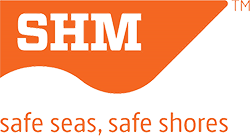Pyrotechnics Supply Sri Lanka are defined as the science of using materials capable of undergoing self-contained and self-sustained exothermic chemical reactions for the production of light, heat, gas, smoke, and/or sound.
Simply put, pyrotechnics are a visual aid to send an SOS signal in case of an emergency at sea. Despite advanced tracking and location systems used on ships today, pyrotechnics still have an important role to play.
Seafarers, ship manufacturers, and ship owners are responsible for ensuring that the appropriate pyrotechnics equipment is available on the ship at all times and the crew is trained to locate and use them efficiently, should the need to do so arise.
Post the Titanic disaster, the SOLAS treaty has also stipulated the minimum type and quantity of pyrotechnics to be carried on board the vessel. In addition, maritime nations have their own additional requirements as well, which are made mandatory for marine ship and personnel safety.
Types of Pyrotechnics
The type and number of pyrotechnics used differs as per the size of the vessel and the application for which it is used.
Red Hand Flares
Hand flares are self-ignitable handheld distress signals that burn uniformly with a bright red colour for at least one minute. They are water resistant to an extent of 10 seconds in shallow depths of upto 100 mm. The hand flares are useful in pinpointing the exact location of the craft and should be lighted when rescue is within sight.
Pyrotechnics supply Sri Lanka

Rocket Parachute Flares
Rocket parachute flares are designed to reach a height of at least 300-350m when fired vertically, burning with a bright red light indicating the vessel s location. The parachute attached to the flare opens at the top, slowing the flare s descent so that it is visible for a longer time. The self-ignitable design of the rocket parachute flare is expected to be such that the parachute does not catch fire under any circumstances and has a maximum descent rate of 5mtr/sec.

Line-Throwing Appliances
Line-throwing appliances, or bridges, are used to connect the ship in distress to the rescue ship creating a safety link between the two. These lines can be then used to pass towing lines or other safety equipment as required. Line-throwing appliances are expected to be able to carry the line for at least 230 mts in calm weather and have at least four projectiles.

Buoyant Smoke Signals
Smoke signals are red or orange in colour and can function upto 15 minutes in calm conditions. They do not emit flames of any sort or spark in the hands of the holder. These signals are also used to pinpoint the direction and location of the vessel unless the weather conditions are not supported.

Man Overboard Signal Smoke Markers (MOBs)
MOBs are used to mark the position of a man overboard by day or night. Ships are required to carry 2 markers, one mounted on each bridge wing with the brackets supplied and attached by line to a 4 kg Lifebuoy.

